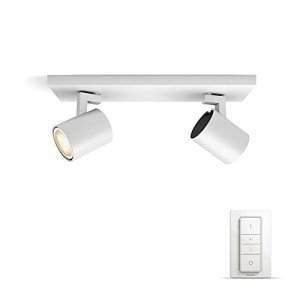Industrial Lamps in the UK: Illuminating Industries and Workspaces
In an age where efficient lighting options play a pivotal function in enhancing performance and safety in numerous industrial settings, industrial lamps have actually become vital tools for factories, warehouses, workshops, and more. The UK's market for industrial lighting is rapidly progressing, driven by developments in technology, a growing concentrate on energy efficiency, and stringent safety regulations. This article explores the various kinds of industrial lamps offered in the UK, their applications, and the factors to consider that must be made when selecting the appropriate lighting solutions for industrial environments.
Comprehending Industrial Lamps
Industrial lamps are created specifically for usage in a variety of industrial settings. They offer the needed lighting while also considering the special challenges presented by such environments, including dust, moisture, high ceilings, and variable temperature levels. Industrial lamps can be found in various types, consisting of LED, fluorescent, and metal halide lighting, each with its own set of qualities and benefits.
Types of Industrial Lamps
LED Industrial Lamps:
- Description: LED (Light Emitting Diode) industrial lamps are energy-efficient, long-lasting, and provide exceptional lighting.
- Benefits:
- Energy effectiveness (up to 80% less energy usage)
- Long life expectancy (approximately 50,000 hours)
- Low heat emission
- Instant brightness without any flickering
- Applications: Factories, storage facilities, and construction sites.
Fluorescent Industrial Lamps:
- Description: These lamps discharge light through the excitation of gas, commonly used in environments needing uniform illumination.
- Advantages:
- Good color rendering
- Cost-effective
- Different sizes and shapes
- Applications: Workshops, garages, and assembly lines.
Metal Halide Industrial Lamps:
- Description: This kind of gas discharge lamp produces an intense, white light and is often used in large areas.
- Benefits:
- High intensity and brightness
- Outstanding for sports places, car park, and big industrial facilities
- Applications: Warehouses, packing docks, and outdoor areas.
Contrast Table of Different Types of Industrial Lamps
| Lamp Type | Energy Efficiency | Lifespan | Brightness | Application Areas |
|---|---|---|---|---|
| LED Industrial Lamps | As much as 80% | Up to 50,000 hours | Very High | Factories, Construction Sites |
| Fluorescent | Moderate | 7,000 - 15,000 hours | Moderate to High | Workshops, Garages |
| Metal Halide | Moderate | 15,000-20,000 hours | High | Warehouses, Outdoor Areas |
Choosing Industrial Lamps
When choosing industrial lamps, numerous factors ought to be thought about. These consist of:
- Type of Application: Different areas have varying lighting requirements. For instance, high-precision jobs may need brighter, more focused lighting compared to basic work space lighting.
- Energy Efficiency: With increasing energy expenses and environmental concerns, choosing lamps with high energy efficiency can result in considerable cost savings with time.
- Life expectancy: Longer-lasting lamps reduce upkeep expenses and downtime, making them more suitable in hectic industrial settings.
- Safety Standards: Compliance with safety guidelines is vital. Click In this article ought to be created to hold up against severe conditions, including moisture, dust, and impacts.
- Cost: While in advance costs matter, the long-lasting savings attained by means of energy-efficient and lasting lamps ought to also be taken into consideration.
Advantages of Appropriate Industrial Lighting
- Boosted Safety: Proper illumination lowers the risk of mishaps and injuries in industrial environments.
- Increased Productivity: Adequate lighting promotes better visibility, helping in the efficiency of workers.
- Expense Savings: Energy-efficient lamps lead to lower electrical power costs and less regular replacements.
- Enhanced Quality Control: Good lighting enables much better examination procedures, eventually improving product quality.
Frequently Asked Questions (FAQs)
Q1. How do I determine the best kind of industrial lamp for my center?A1. Evaluate the particular lighting needs and conditions of your facility. Consider factors such as the tasks being performed, the size of the area, and any regulatory requirements.
Q2. Are LED lights worth the financial investment in an industrial setting?A2. Yes, LED lights offer considerable long-term savings due to lower energy usage and longer life expectancies, making them an economical option in the long run.
Q3. Can I install industrial lamps myself?A3. While some individuals might have the skills to install lamps, it is often advised to hire a qualified electrical expert to ensure compliance with safety requirements and regional regulations.
Q4. What maintenance is needed for industrial lamps?A4. Routine evaluations for damage, cleansing of lights, and timely replacement of defective lamps are important to preserve ideal efficiency.
Q5. What are the most recent trends in industrial lighting technology?A5. Advances in smart lighting systems, including IoT (Internet of Things) integration and advanced energy management options, are at the leading edge of industrial lighting development.
The ideal industrial lamps are vital to guaranteeing safety, productivity, and cost effectiveness in various industrial settings. The UK market offers a variety of lighting options, from LED lamps to fluorescent and metal halide choices, each ideal for various applications. By comprehending the functions and advantages of these lighting types and taking key considerations into account, businesses can make informed choices that will brighten their workspaces efficiently while optimizing efficiency and conserving costs. Investing in the best industrial lighting not only improves general ambiance but also promotes a safer and more productive work environment.

